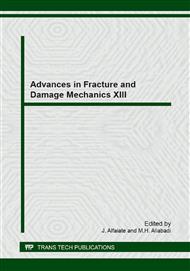p.445
p.449
p.453
p.457
p.461
p.465
p.469
p.473
p.477
Evaluation of Slip Resistance of Safety Footwear Using Novel Equipment
Abstract:
There are several causes of slip and fall accidents, such as floor and outsole surface characteristics, contaminants, environmental and human factors, and cognition. In relation to controllable causes, floor and outsole surface characteristics have been frequently investigated over the past decades. The characteristics of safety footwear outsoles, such as roughness, hardness, and tread pattern, tend to differ from those of casual shoes on the Korean market. The aim of this study is to investigate the slip resistance of safety footwear on the Korean market and determine the major design factors to improve the slip resistance. All friction tests were performed using the Korean Occupational Safety and Health Agency’s newly developed testing machine. Twenty-eight safety shoes were used in this experiment, and all friction tests were conducted under three different contamination conditions, namely water, detergent, and glycerol. The friction measurement results show that the hardness, material, and patterns of outsoles had a major effect on the slip resistance, but the effects were not statistically significant for some safety footwear. In general, safety footwear that had a number of small extruded blocks shows good slip resistance. Safety footwear patterns that have many small raised blocks on the heel have a higher friction coefficient than the others. A lower outsole hardness also gives a higher coefficient of friction.
Info:
Periodical:
Pages:
461-464
Citation:
Online since:
September 2014
Authors:
Price:
Сopyright:
© 2015 Trans Tech Publications Ltd. All Rights Reserved
Share:
Citation:


